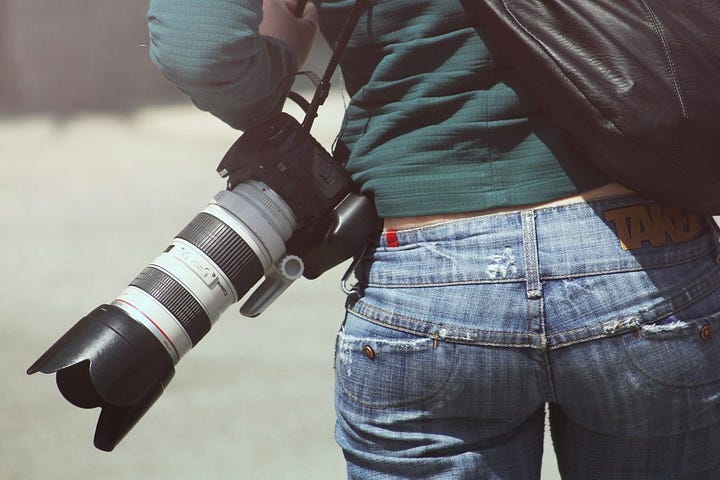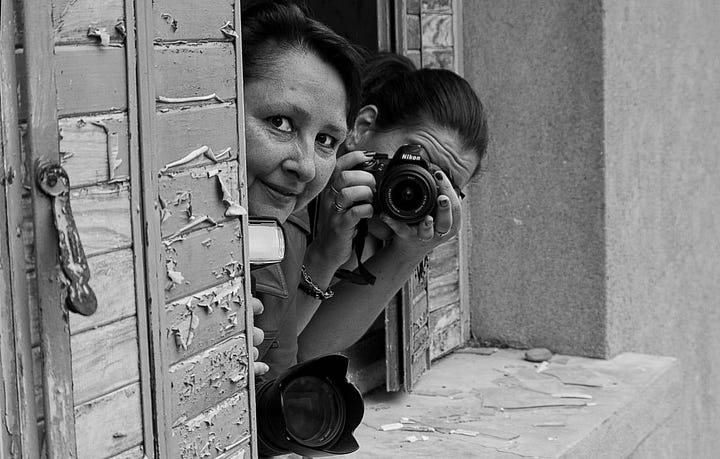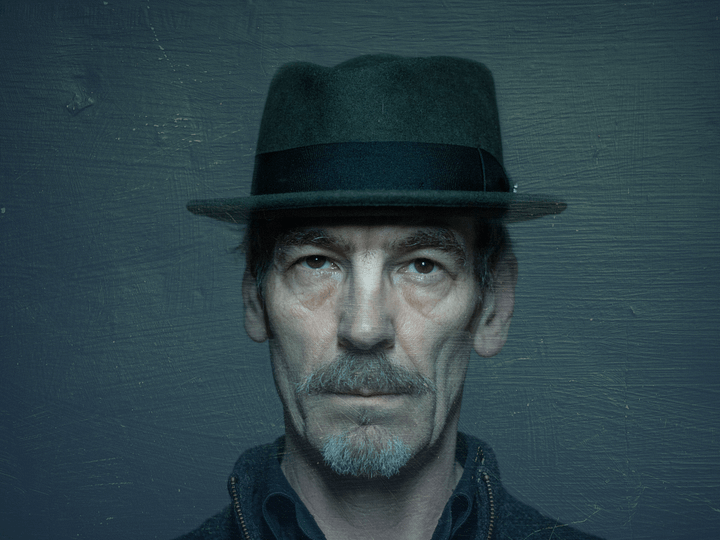Sean P. Durham First published on Medium.com
“The camera is an instrument that teaches people to see without a camera.” Dorothea Lange
Diane Arbus
Digital life has changed everything, including photography and how we take photos.
Everybody can take a photo, just pick up a plastic cased digi-machine and point and shoot. The results appear to be astounding, flabbergasting. For a while digital photography, it’s amazing capacity to balance the light and darkness, to tone the colours and pick up the smallest details of an object that caught our eye, made us all go nuts and buy some sort of digital camera.
Smartphone or DSLR or Mirrorless, take your choice and enjoy photographing the world as you see it.
The question is, are we really photographing the world as we see it?

Do we take the time to get over the amazing technology and stop long enough to look at the object that caught our eye?
The world is full of techies, gear-freaks, and early adopters who seem to be hell bent on using the latest, bestest equipment that’s on offer. They swear blind that their camera, the latest technology, is what you need if you want to take great shots and if you want to be taken seriously as a photographer.
Digital photography has overcome many problems that photographers used to love working out for themselves. How to set the shutter speed, the aperture size and the distance, the shadow, the light, the trick of adjusting the ASA (ISO) rating up a notch to trick the camera into working as if you had a fast film roll inside.

Everybody Can Do It with a P
Now, all you do is twist the dial and set the whole camera onto “P” setting if you don’t want to control things. It’ll take great shots when you push the button.
My question is, why are you and me taking photographs?
The camera type doesn’t matter so long as you have a lens that leads to a box of tricks that will capture the moment.
Many a street photographer has proved her or his worth by using a camera that most gear-heads would sneer at.
Today, many photographers find that they can get the shot with a smartphone that has high quality. There a many good examples of street photographers and portrait photographer’s work that were taken with simple cameras. The lens on the phone was just right and the basic settings were enough to get the shot.
The real thought is that you are seeing something important. You feel something about a little corner of the world that you bumped into and so your mind begins to focus, to engage with the object, and when you feel that you have understood it, you frame it and keep it — in your thoughts.

How to Capture the World
Photography allows us to frame the moment that we have considered deeply and capture it so that we can go back and take another look.
This allows us to ponder our own ability to see things correctly, to ask questions about why we thought the object or person in the photo was worth keeping. Maybe, we even get to point where we ask “what on earth was I thinking?” when we realise that our momentary ‘stopping’ and focusing was probably a stupid idea, at that time.
Taking photos changes our view of the world. A perspective is a mentality and the person involved in looking makes decisions about what is important to them based on their biases.
Snap Shooter, Fast ideas
Digital photography has led to the snap-shooter who can click off several hundred shots in a very short time. There’s no processing costs to think about, and if you shoot enough rolls of pixels a pretty interesting shot might show up amongst the several hundred shots that day.
A photographer soon discovers that cheap shots can lead to a lot of work, sorting and culling photos, hoping that the little gem is in there someplace.
And when the little-gem turns up in your workflow, you tag it with glee and start adjusting the colours and the exposure and the rest.
For some reason, you saw something interesting, the little-gem, and took a shot that turned out to be interesting. Then during the after-shot workflow process you decided to change what you saw.
Fast World, Slow Shooter
We have a tough time just looking at things. The world is an ever changing fast flow place. To stop and look, is hard.
When we have an interesting shot and can remember the reason why we stopped to photograph it, we should accept the decisions that we made at that moment, the framing decisions and the feeling about it, and keep it.
It’s when we sit down at the computer and see the photo that seemed so interesting that we allow a new judgement to kick in. Our mind becomes objective and critical about the shot taken. The new thought is a piggyback idea of why we took the shot. We start to judge our own ability to make a decision about what’s a good photo and what’s not. We then begin to experiment with the controls in the software and try and bend the world into our own biased opinion of what we saw.
At that point, we are in danger of becoming fiction makers.
Photography has always been a principle medium for recording images of the world. Today, we look at photos that were taken during the Great Depression, and other photos taken of small moments of joy in the lives of normal, everyday people. We hope that what we see in these photos is an honest recording of history.


How often have you come across a photograph of a man or a woman, an unknown person who is laughing at something out of frame, a glass on a table next to a half full bottle of wine? And asked yourself who is this person, why are they laughing and what are they celebrating? The photo elicited emotions in you. You began to engage and ask questions. At which point the photo becomes important.
The photo of cheer and joy reflects many feelings about our own lives. Joy is something that all sensible people seek.
A photo of a mother and child who are starving and maybe close to their end, reflects on our fear of how cruel the World can be.

Some people have travelled the World to discover the true meaning in a photo that they have found. Others have travelled to far and distant places in search of a meaningful photograph.
Taking photographs is a passion, a hobby and a profession. Regardless of the reason, there is a responsibility involved about what you decide is a worthy moment for memory and how much thought you put into framing the shot and adjusting the colour and light.
All of these things will affect the outcome. The moment is fleeting and your chance for a great shot, whether it be a wedding photoshoot, a portrait or a major event in public, is a matter of skill. How skillful are you with your thoughts? How often have you taken a shot knowing it won’t be up to scratch, but you have the backup of Photoshop to support correcting laziness or mistakes?
Thinking is Your First Photography Tool
Photography requires a person to be a thinker. Your main tool is grey-matter between the ears.
At the time of taking a photo the photographer should already have made a decision at the attempt to save that particular moment. And hoping that it went right, that the end result will be satisfactory of that moment, and this has a lot to do with being conscious in the moment.
Digital photography encourages a person to document their daily lives, who knows, it might be worth it. But the mindless snapping of selfies isn’t necessarily a recording of the self. Doing what? Interacting with self?
Self interacting with the world around is a legitimate way of remembering one’s own experiences without having our own face in every shot.
If anyone who is a Selfie Addict should look back at their life through photos, I think they will become bored within minutes.
The photographs that we treasure have magic in them.
Being conscious of the taken moment, knowing the feeling and recognising that something is important is a reflection of the magic within ourselves.
To take a photo at this moment, to know that skill is at hand, and to put mind, body and soul into this small and fleeting moment, is to take a photograph that includes self, somewhere, in the image too.
Artists are always seeking the magical moment, and sometimes they find it and keep it. But to do this, to work magic, the magician must train herself to work the tools that transform the base idea into the splendour of light that human magic really is.
Magic; that particular thing in a photograph that can’t be named with words. It’s just there — and everybody knows it.
Photography is one way to look at the world we live in. There are other ways. If you take photographs and want to be better, to take great wedding shots, portraits or street shots, then developing the skills of thinking while working are as important as is the basic equipment needed to technically capture the shot.
All the gold in the world…

To be a good photographer is to be a thinking person. There are people who hate thinking — they hate using their brains because it requires introspection and patience especially when you discover that you are just as capable of being an idiot as the next idiot.
The real thinker knows that mistakes are inevitable when working with a rough stone that isn’t yet ready for the building work.
All the technical equipment in the world won’t make you a great photographer. Time and patience, enjoyment of the process and journey, and the ability to see deeply into your own environment and interact with it, is the path that leads to great photographs.

Leave a Reply
You must be logged in to post a comment.